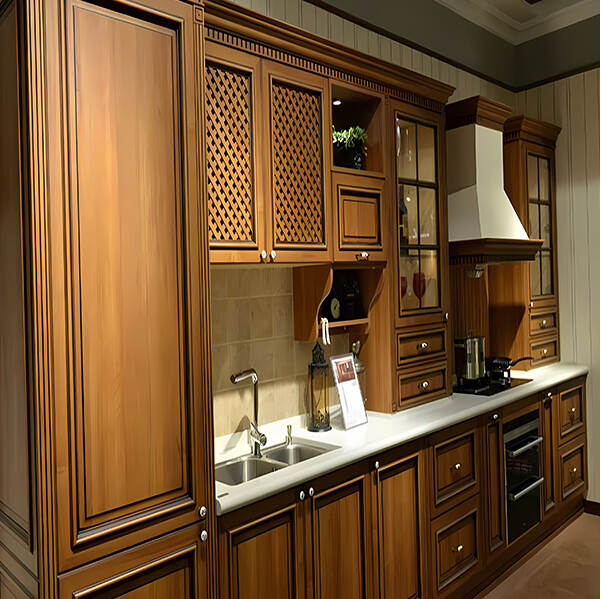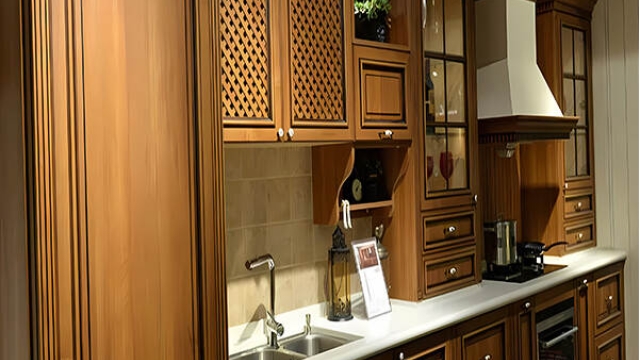 As we explore innovative home design trends, it’s essential to consider options like Bathroom Vanity Styles for Every Taste to complement the evolving landscape of building materials and sustainability practices projected for 2040.
As we explore innovative home design trends, it’s essential to consider options like Bathroom Vanity Styles for Every Taste to complement the evolving landscape of building materials and sustainability practices projected for 2040.
As we look ahead to 2040, the landscape of building materials is poised for transformative changes that will redefine our living spaces. With advancements in technology and a growing emphasis on sustainability, the materials we choose for construction and renovation will reflect our commitment to a better future. From eco-friendly options to smart materials that respond to environmental changes, the building industry is on the brink of an evolution that promises to enhance both functionality and aesthetic appeal.
Y&R Furniture, a seasoned player in the building material sector, exemplifies how experience and innovation can intertwine. With over 25 years of expertise in manufacturing custom kitchen cabinets and bathroom vanities, the company has established itself as a reliable partner for projects across more than 20 countries in Asia. As we delve into the future of building materials, it’s essential to consider how established manufacturers like Y&R are adapting their offerings to meet the demands of a more sustainable and design-conscious market. Their comprehensive solutions not only cater to the functional needs of a project but also embrace the aesthetic trends shaping our environments in the coming decades.
Innovative Materials Shaping the Future
As we look towards 2040, the building materials industry is poised for significant transformation. Innovative materials are at the forefront of this evolution, promising to enhance both sustainability and performance in construction. One notable trend is the rise of bio-based materials, which utilize renewable resources and aim to reduce the carbon footprint associated with traditional construction methods. These materials can not only improve energy efficiency but also create healthier indoor environments for occupants.
Another exciting development is the advancement of smart materials that can respond to their environment. These materials can change their properties in response to factors like temperature, humidity, or even light. For example, self-healing concrete and programmable walls are becoming more viable, which can lead to buildings that are not only more durable but also more adaptable to changing conditions and energy demands. This shift towards intelligent building materials signifies a major leap forward in the efficiency and longevity of structures.
Additionally, recycling and upcycling in building materials are gaining traction as a means to combat waste in the construction industry. Companies are now exploring ways to repurpose materials from demolished buildings, thereby conserving resources and reducing landfill contributions. Y&R Furniture, with its experience in the custom kitchen cabinet and bathroom vanity market, is actively engaged in sourcing these innovative materials, providing clients with sustainable options that not only meet aesthetic standards but also adhere to eco-friendly practices.
Sustainability in Building Practices
As we look towards 2040, sustainability will play an increasingly vital role in building practices. The construction industry has a significant impact on the environment, contributing to pollution and resource depletion. Hence, the shift towards eco-friendly materials and methods will be paramount in reducing the carbon footprint of new constructions. This transition will involve the use of renewable resources, reducing waste during production processes, and enhancing energy efficiency in buildings to create a more sustainable future.
Innovative materials will emerge as vital components of sustainable building. For instance, advancements in biocomposite materials made from agricultural by-products and recycled elements will become mainstream, offering better performance while minimizing environmental impacts. Companies like Y&R Furniture, with 25 years of experience in the building material sector, are well-positioned to adapt to these trends by integrating sustainable practices into their manufacturing processes, providing health-conscious and environmentally friendly cabinetry solutions.
Moreover, sustainability will extend beyond materials to include water conservation, waste management, and energy use during the lifecycle of buildings. Smart technologies combined with sustainable practices will streamline operations, ensuring that structures are not only eco-friendly from the start but also maintain their efficiency over time. As the industry embraces these holistic approaches, the demand for high-quality, sustainable building materials will reshape the market landscape, benefitting both builders and consumers globally.
Technological Advancements in Manufacturing
The evolution of technology in manufacturing is set to revolutionize the building materials industry by 2040. Innovations such as advanced robotics and automation are redefining production processes, allowing for increased efficiency and precision. Custom manufacturers, like Y&R Furniture, can leverage these technologies to create bespoke kitchen cabinets and bathroom vanities with unparalleled accuracy, meeting diverse consumer demands with speed and agility.
Moreover, the integration of artificial intelligence and data analytics is enhancing the ability to forecast market trends and optimize supply chain management. This means that companies can better anticipate customer needs, reduce waste, and streamline operations. For Y&R Furniture, harnessing these AI-driven insights offers the potential to improve product quality and ensure that materials are sourced sustainably, aligning with the growing demand for eco-friendly building solutions.
Finally, the rise of additive manufacturing, commonly known as 3D printing, is opening new avenues for customization in building materials. This technology enables the production of complex designs that were previously difficult or impossible to achieve using traditional methods. As a result, manufacturers can produce unique components that cater to specific project requirements, fulfilling the modern consumer’s desire for individuality in their living spaces.
Market Trends and Consumer Preferences
As we look towards 2040, the building materials market is expected to undergo significant transformations influenced by sustainability and innovation. Consumers are becoming increasingly conscious of their environmental impact, driving a demand for eco-friendly materials. Companies like Y&R Furniture, with a focus on sustainable practices, are poised to meet this growing demand by offering products that utilize recycled materials and sustainable sources. This shift not only promotes responsible consumption but also attracts a new generation of buyers who prioritize environmental stewardship in their purchasing decisions.
In addition to sustainability, personalization will play a critical role in shaping consumer preferences. With advancements in technology, such as 3D printing and customizable manufacturing processes, consumers will seek unique and tailored building materials that reflect their individual styles and preferences. Y&R Furniture’s experience in custom kitchen cabinets and bathroom vanities positions the company well to capitalize on this trend, providing clients with bespoke solutions that cater to their specific needs. This move towards personalization underscores a broader desire for homes that truly reflect their owners’ identities.
Finally, the integration of smart technology into building materials is expected to redefine consumer expectations. As homes become more interconnected, materials that incorporate smart features will gain popularity. This includes everything from cabinets equipped with built-in charging stations to smart vanities that monitor usage patterns. Y&R Furniture can lead the way by innovating solutions that blend functionality with cutting-edge technology, ensuring they remain at the forefront of market trends while satisfying the evolving preferences of consumers in the building materials industry.






